
I was quite surprised to see a patch of blooming Oxalis trilliifolia (a member of the family Oxalidaceae which goes by the common names Great Oxalis, Great Wood-sorrel, Threeleaf Wood-sorrel, Trillium-leaved Oxalis, Trillium-leaf Wood Sorrel, Trillium-leaf Wood-sorrel) on a recent trip to the Cape Horn area on the Washington side of the Columbia River Gorge. It was in a muddy area of seepage just before the spring water ran into a little creek, which is probably why a plant that I usually find flowering in early summer was blooming so late in the year, although it’s possible that it was too wet there earlier in the year, and ‘Flora of North America does say flowers can be found into September. Regardless, the scapes with multiple pretty little white flowers, as well as some of the fruits, were a welcome sight on one of the last 90⁰ days of the summer, and they were the only native wildflower I found blooming in the forest.
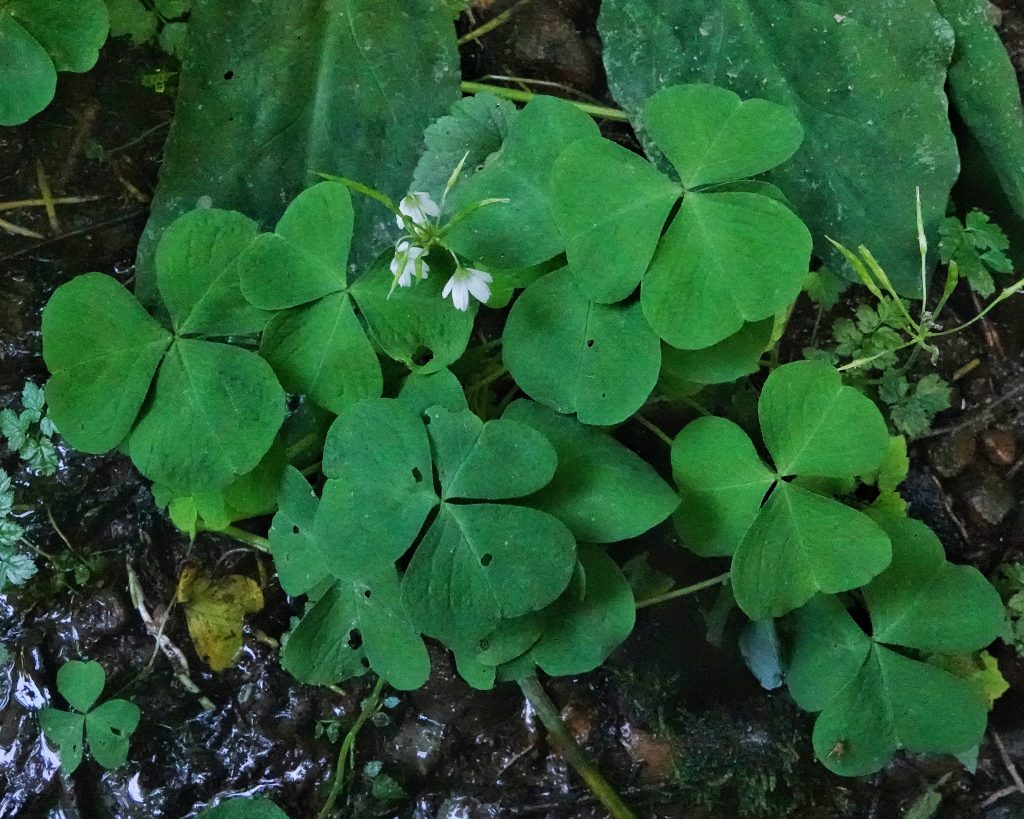
Description– “Creeping, with clusters of large clover-like leaves. Leaves carried on 2–8 in. petioles, 3 leaflets, each 1 1/2 in. or less, heart-shaped with fold in center. Cluster of 2–9 flowers on stalk less than 10 in. high arising above leaves. Flowers white to pale pink, 5 petals, each 1/2 in. long, sometimes with reddish veins.” Oxalis trilliifolia | Trillium-leaved Sorrel | Wildflowers of the Pacific Northwest
Similar species– Oxalis oregana has only one flower per stalk; Oxalis suksdorfii and Oxalis corniculata (Creeping Yellow Wood Sorrel) have yellow flowers
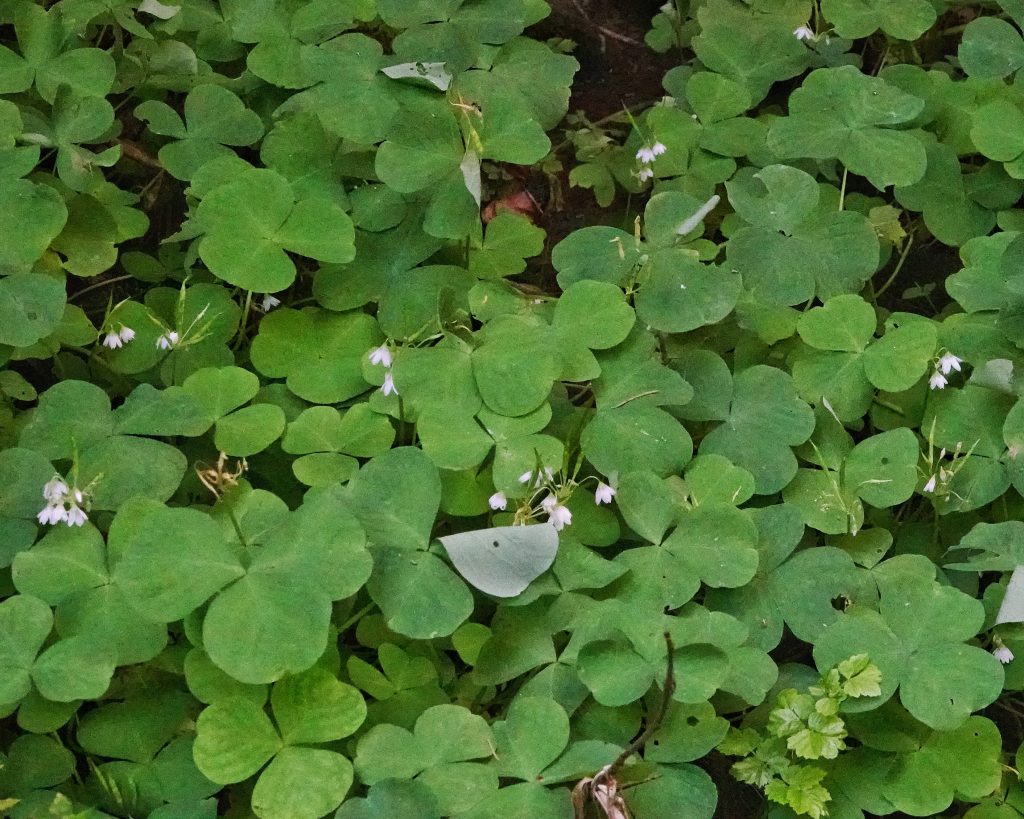
Habitat– “Meadows and moist woods in the coastal mountains and up to 6000 feet in the Cascades.” Oxalis trilliifolia – Burke Herbarium Image Collection
Range– PNW endemic- found west of the Cascades from s BC into n California; possibly a disjunct population in ne Washington/nw Idaho. For more range information see Observations · iNaturalist
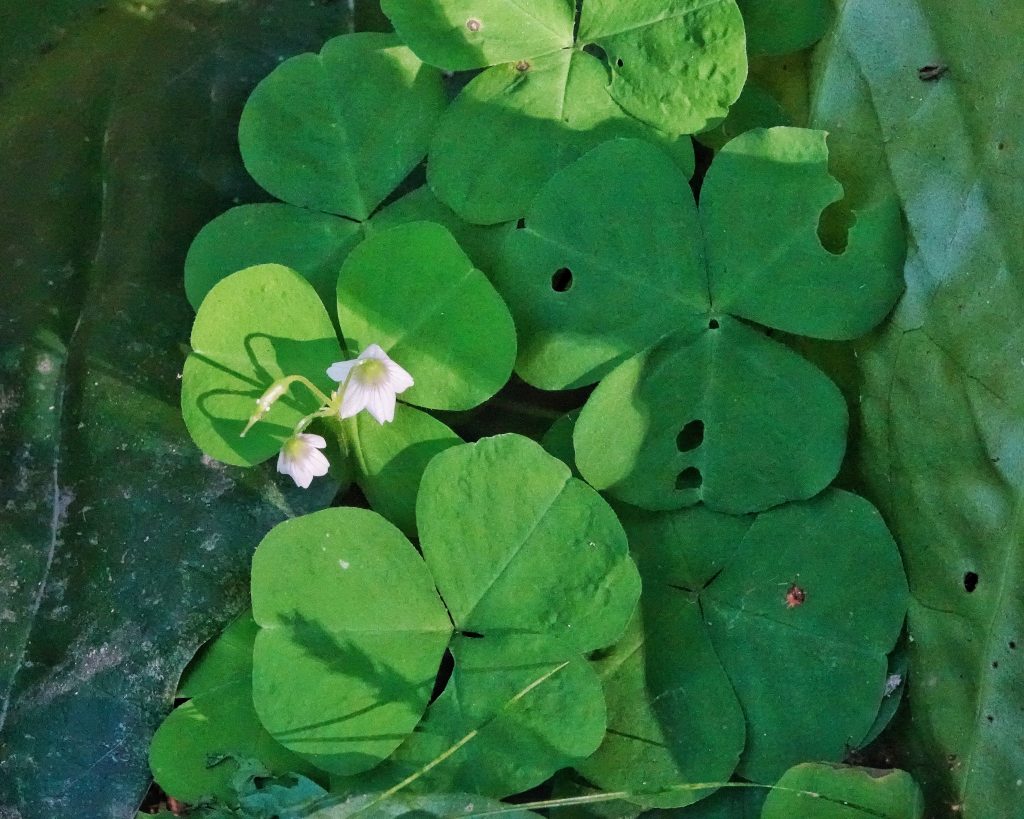
Eaten by– The moths Galgula partita (Wedgling Moth), Trichodezia californiata, and occasionally Spilosoma virginica may utilize this plant as a larval host.
Reproductive timing– Said to bloom in early summer, but I found these blooming in mid-September, and ‘Flora of North America’ says May-September.
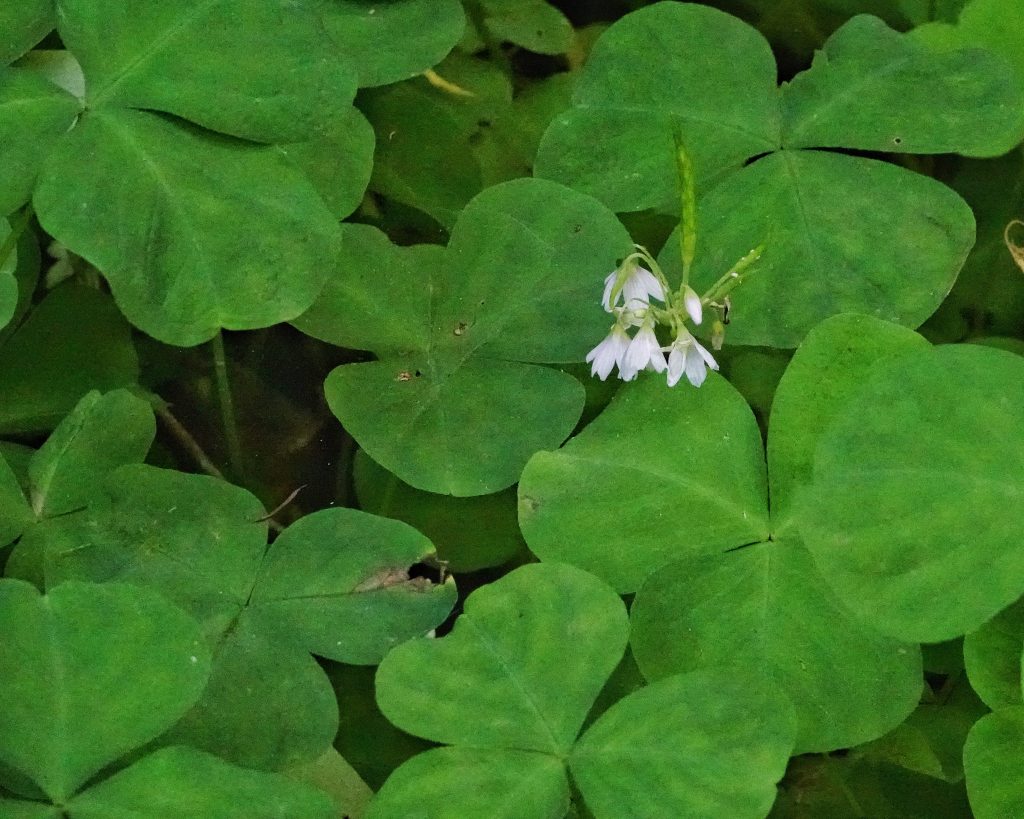
Ethnobotany– I can find nothing specific for this plant, but it is probably similar to other Oxalis spp.
Etymology of names– Oxalis is from the Greek for ‘being sour/sharp’ and refers to the acidic taste of the juice of the plant. The specific epithet trilliifolia is from the Latin words for ‘trillium leaved’, because of a perceived similarity between the foliage of this plant and that of Trillium sp.
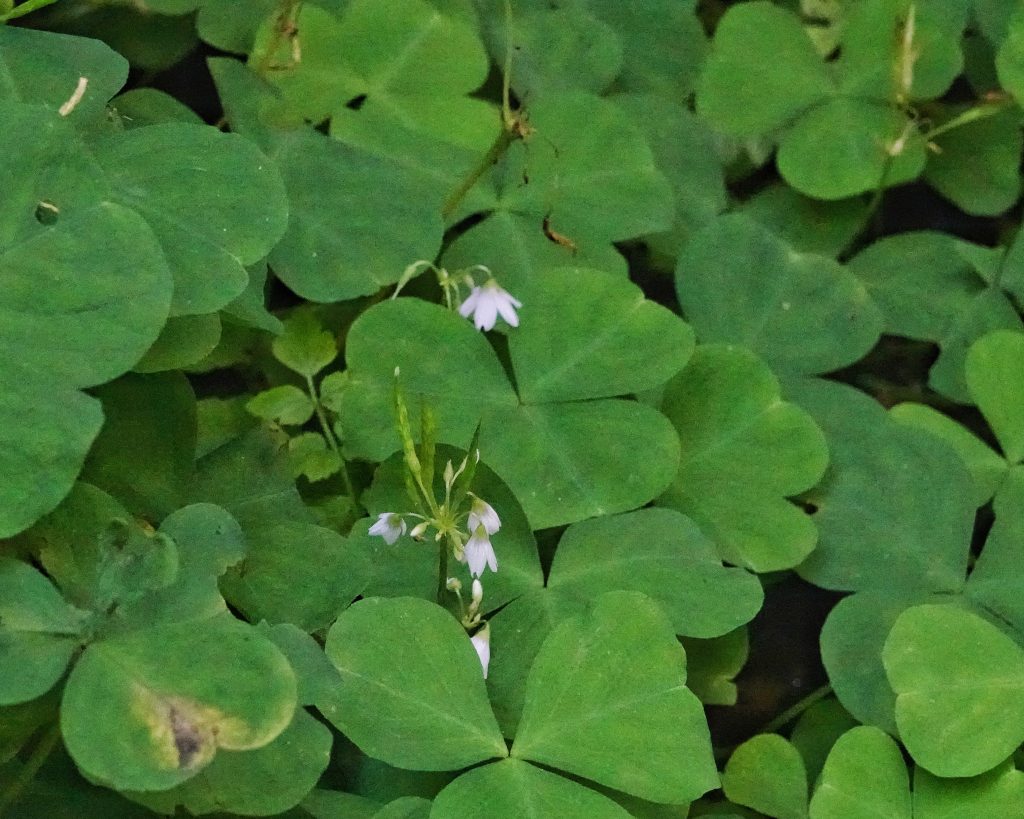
Oxalis trilliifolia | Trillium-leaved Sorrel | Wildflowers of the Pacific Northwest
Oxalis trilliifolia – Burke Herbarium Image Collection
OregonFlora Oxalis trilliifolia
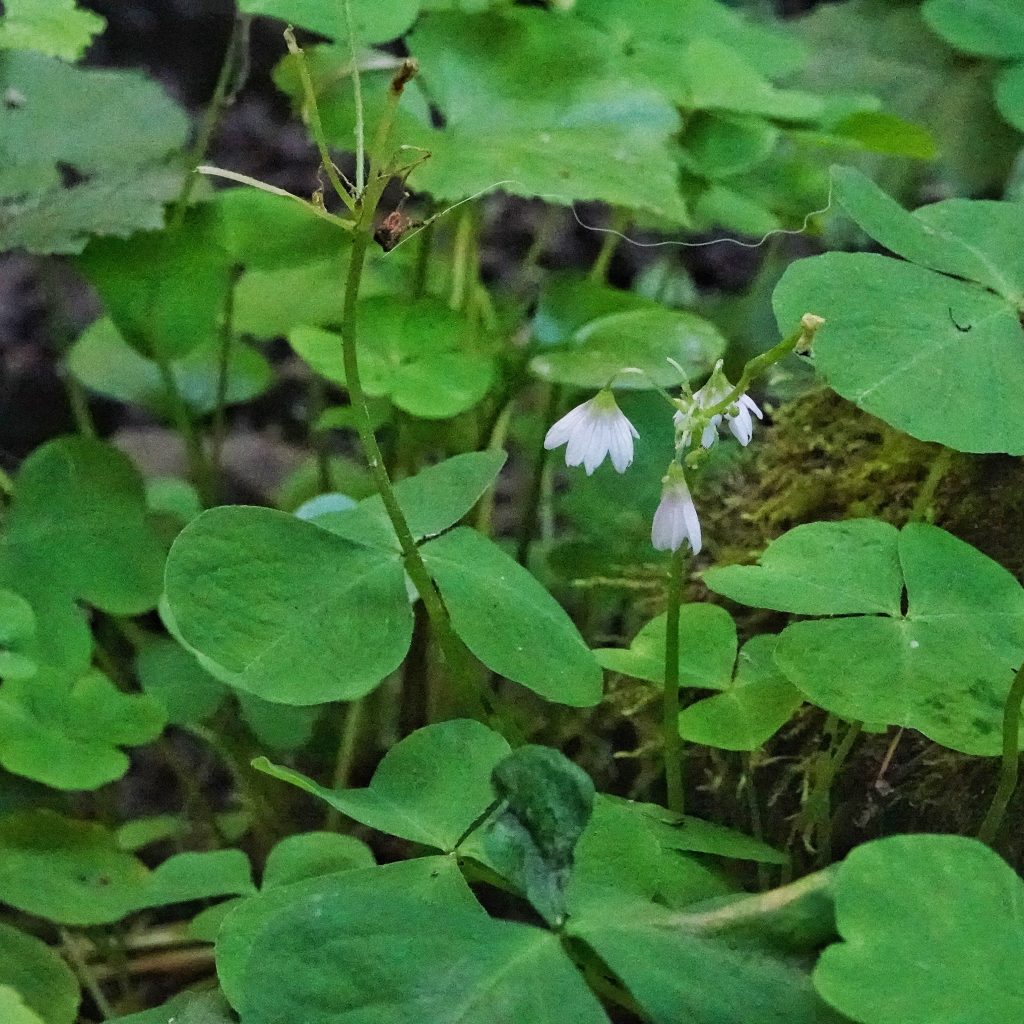
I’ve been looking for seeds or plants for this. It seems like it’d be a good nursery plant but again Oxalis oregana exists.
Would be worth propagating as a hobby plant.
I agree, Elias! It’s a very cool plant! Might be worth finding a good patch and collecting the seeds.